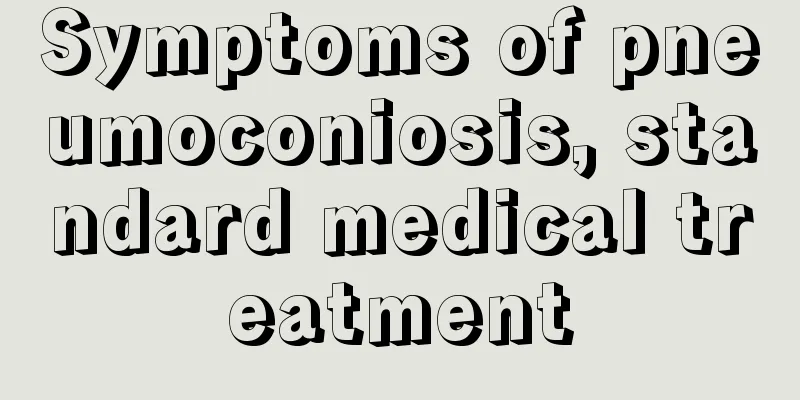Symptoms of pneumoconiosis, standard medical treatment

|
The standard name of pneumoconiosis is pneumoconiosis, which is caused by long-term inhalation of industrial dust (dust) during occupational activities. It is divided into many types, including non-accumulative pneumoconiosis, byssinia pneumoconiosis, farmers' pneumoconiosis, etc. It has no specific clinical manifestations itself, and its clinical manifestations are mostly related to complications. 1. Cough In the early stage of pneumoconiosis, the cough is usually not obvious. However, as the disease progresses, patients are often complicated with chronic bronchitis, and in the late stage, patients are often complicated with lung infection, both of which can significantly aggravate the cough. Cough is related to season, climate, etc. 2. Coughing up phlegm Coughing up phlegm is mainly caused by the respiratory system's continuous removal of dust. Generally, the amount of sputum coughed up is not much, and it is mostly gray and thin. If combined with pulmonary infection and chronic bronchitis, the amount of sputum will increase significantly, and the sputum will be yellow, sticky or lumpy and often difficult to cough up. 3. Chest pain Pneumoconiosis patients often feel chest pain, but there is usually no correlation or parallel relationship between chest pain and the clinical manifestations of pneumoconiosis. The location varies and often changes, and is mostly localized. It is usually a dull pain, but may also be a bloating or stabbing pain. 4. Difficulty breathing As the degree of lung tissue fibrosis increases, the effective breathing area decreases, the ventilation/blood flow ratio becomes unbalanced, and breathing difficulties gradually worsen. The occurrence of complications can significantly increase the severity and development speed of dyspnea. 5. Hemoptysis It is relatively rare. It may be caused by long-term chronic inflammation of the respiratory tract, resulting in mucosal vascular damage, with a small amount of blood in the sputum. It may also be caused by the dissolution and rupture of large fibrotic lesions and damage to blood vessels, resulting in increased hemoptysis. 6. Others In addition to the above-mentioned respiratory system symptoms, there may be systemic symptoms of varying degrees, the most common of which is decreased digestive function. |
<<: What to do with pneumoconiosis? Transfer from the post
>>: What causes itchy scalp? Experts answer your questions
Recommend
The role of coarse salt
The so-called coarse salt actually refers to the ...
How to treat drooling obsessive compulsive disorder, try these methods
Obsessive-compulsive disorder is a psychological ...
What are the disadvantages of using depilatory cream
In this era, in this society! Hair removal? This ...
How to treat chronic bronchiectasis
The treatment of chronic bronchiectasis includes ...
What causes endometrial cancer? These aspects need attention
Endometrial cancer is a disease that occurs durin...
Can asthma cause pharyngitis?
Long-term uncured asthma may cause pharyngitis. O...
The difference between deep coma and shallow coma_The main difference between shallow coma and deep coma
Coma is a relatively serious condition. Generally...
How much does an endometrial cancer checkup cost?
The key to treatment is early stage. Some patient...
Is triple positive definitely contagious?
People who often eat out must pay attention to th...
Can my father's kidney cancer be inherited?
For kidney cancer, they are very worried that the...
The real cause of laryngeal cancer
According to experts, laryngeal cancer is common ...
What are the characteristics of people with strong evil spirits
Sha Qi generally refers to a person who has a fie...
Advantages and Disadvantages of Radiation Therapy for Skin Cancer
Most skin cancers are basal cell carcinoma or squ...
Can green tea protect against computer radiation?
In recent years, as the incidence of diseases has...
What causes prostate cancer?
In the past, people were still unfamiliar with pr...









